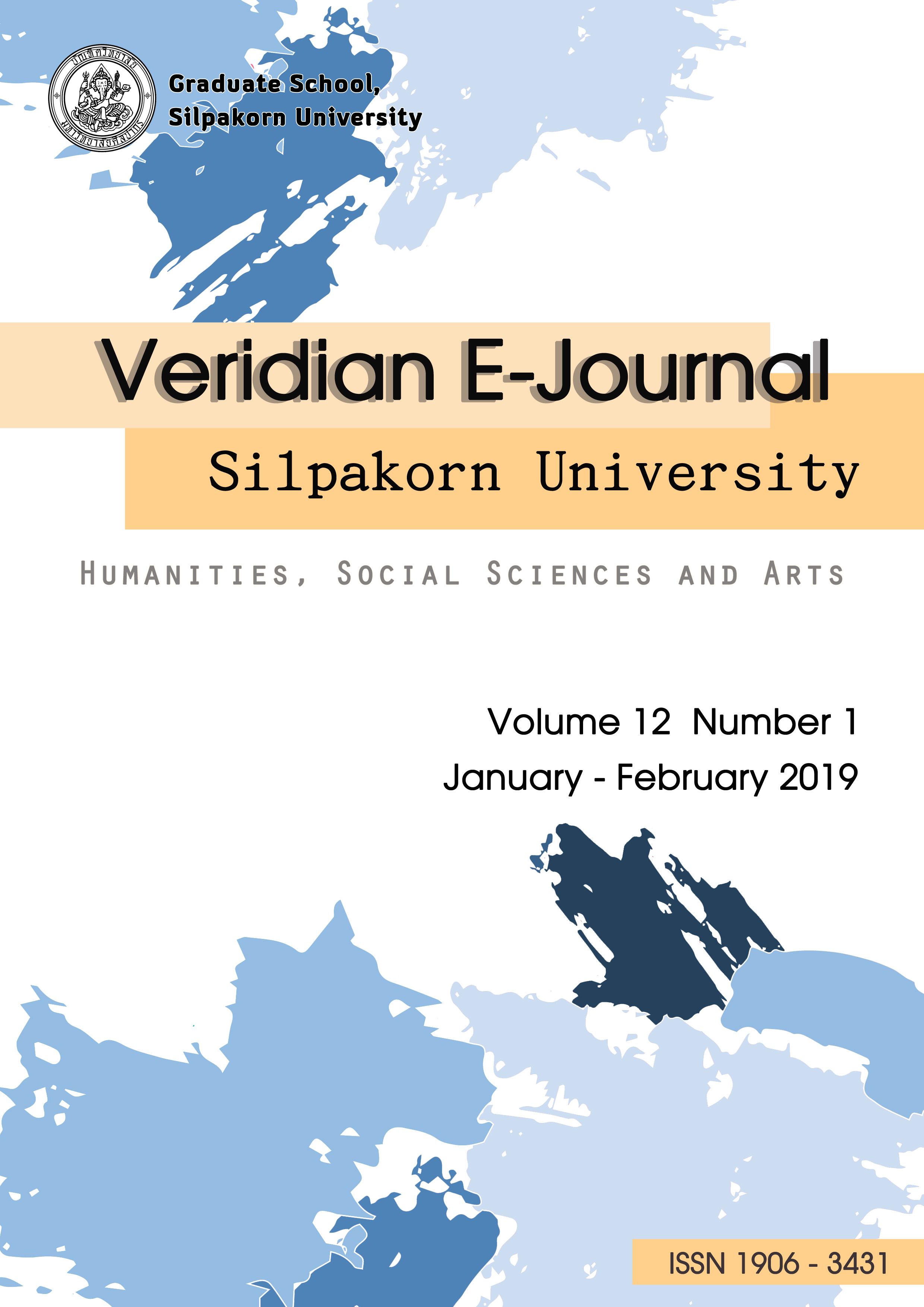รูปแบบการพัฒนาการอ่านและเขียนโดยการเรียนรู้แบบสมองเป็นฐานสำหรับเด็กปฐมวัย โรงเรียนบ้านเด่นเหล็ก (A Model to Develop of Reading and Writing through Brain Based Learning for Pre-School Students in Bann Den Lek School) Brain Based Learning: Reading and Writing for Pre-school Students
Main Article Content
Abstract
บทคัดย่อ
การวิจัยครั้งนี้มีวัตถุประสงค์ คือ สร้างรูปแบบการพัฒนาการอ่านและเขียนโดยการเรียนรู้แบบสมองเป็นฐานสำหรับนักเรียนระดับชั้นอนุบาลในโรงเรียนบ้านเด่นเหล็ก โดยมีวัตถุประสงค์ย่อย 3 ขั้นตอนดังนี้ 1) สร้างและตรวจสอบรูปแบบ 2) ศึกษาผลการใช้รูปแบบ และ 3) ประเมินรูปแบบ ดำเนินการตามระเบียบวิธีวิจัยและพัฒนา กลุ่มตัวอย่างมี 2 กลุ่ม คือ 1) ผู้ใช้รูปแบบมี 2 กลุ่ม กลุ่มที่ 1 จำนวน 7 คน คือ ครูปฐมวัยในโรงเรียนบ้านเด่นเหล็กจำนวน 3 คน และนักศึกษาสาขาวิชาการศึกษาปฐมวัย 4 คน 2) นักเรียนระดับชั้นอนุบาลปีที่ 3 จำนวน 18 คน ซึ่งได้จากการสุ่มอย่างง่าย และใช้แบบแผนการวิจัยแบบ One Group Pretest – Posttest Design ระยะเวลาในการทดลองรูปแบบเป็นเวลา 6 สัปดาห์ เป็นเวลา 30 วัน วันละ 1 ชม. ในภาคเรียนที่ 1 ปีการศึกษา 2561 เครื่องมือในการเก็บข้อมูลมี 3 ชนิด ได้แก่ แบบประเมินความสามารถในการอ่านสำหรับเด็กปฐมวัย แบบประเมินความสามารถในการเขียนสำหรับเด็กปฐมวัย และแบบสอบถามความคิดเห็นที่มีต่อรูปแบบ วิเคราะห์ข้อมูลเชิงปริมาณโดยการหาค่าเฉลี่ย ส่วนเบี่ยงเบนมาตรฐาน และการทดสอบค่าที วิเคราะห์ข้อมูลเชิงคุณภาพ ได้แก่ การจับกลุ่มข้อมูลประเด็นหลัก และวิเคราะห์สรุปอุปนัย
ผลการวิจัยมีดังนี้
- รูปแบบการพัฒนาการอ่านและการเขียนโดยการเรียนรู้แบบสมองเป็นฐานของเด็กปฐมวัยโรงเรียนบ้านเด่นเหล็ก สร้างขึ้นบนพื้นฐานทฤษฎีการประมวลข้อมูล ทฤษฎีมนุษยนิยม ทฤษฎีการสร้างองค์ความรู้ด้วยตนเอง และแนวคิดการสอนภาษาศาสตร์ ที่เชื่อมโยงการทำงานของสมองด้านภาษา 8 ส่วน คือ คอร์เทกซ์กลีบหน้าผาก 2. โบรก้า 3. เวอร์นิคเก้ 4. ระบบลิมบิค 5. ฮิปโปแคมปัส 6. สมองส่วนการมองเห็น 7. สมองส่วนการเคลื่อนไหว 8. เซลกระจกเงา รูปแบบมีองค์ประกอบหลัก 8 กิจกรรมดังนี้ 1) ทักทายและอ่านบัตรชื่อ 2) เกมการเคลื่อนไหว 3) กฎห้อง 6 ข้อ 4) สอนเพื่อน 5) สลับกันสอน 6) บอกประโยคเพื่อเขียน 7) อ่านประโยคที่เขียน 8) วาดภาพจากประโยค ซึ่งผลการตรวจสอบมาตรฐานจากผู้ทรงคุณวุฒิก่อนการทดลอง พบว่า รูปแบบมีคะแนนความคิดเห็นว่าสามารถนำมาใช้ได้จริง และมีความเป็นประโยชน์ในระดับมาก (4.49 และ 4.49)
- ผลการใช้รูปแบบ พบว่า คะแนนเฉลี่ยความสามารถในการอ่านและเขียนของกลุ่มตัวอย่างหลังการใช้รูปแบบมีคะแนนสูงขึ้นอย่างมีนัยสำคัญทางสถิติที่ระดับ .01 เด็กร่วมกิจกรรมด้วยความเต็มใจและเข้าใจความหมายของคำและประโยคด้วยการแสดงท่าทาง
- ผลการประเมินรูปแบบจากผู้ใช้รูปแบบ พบว่า กลุ่มตัวอย่างทุกคนเห็นด้วยกับการนำรูปแบบนี้มาใช้ในการพัฒนาการอ่านและเขียนของเด็กปฐมวัยในระดับมากที่สุด ทั้งด้านการนำมาใช้ได้จริง และความเป็นประโยชน์ (85 ถึง 4.95) และเชื่อมั่นว่ารูปแบบนี้เป็นวิธีการสอนเด็กปฐมวัยที่เหมาะสม ทำให้เด็กอ่านออกเขียนได้ด้วยความสุขสนุกสนานและร่วมกิจกรรมด้วยความเต็มใจ
The purpose of this study was to design a model to develop of reading and writing through BBL for kindergarten of Ban Den Lek school, in accordance of the following process; 1) designing and examining the model, 2) testing the model, and 3) evaluating the model. The methodology used was a research and development. The samples were 2 groups, 7 teachers and 18 preschool students which were selected by simple random sampling. The research was designed by using group pretest-posttest design. Testing the model duration took 6 weeks. Research instruments for data collection were the reading and writing assessment for preschool students and questionnaire. Arithmetic mean, Standard deviation, t-test were applied to analyze the results of the study, while the qualitative data was analyzed by domain analysis and inductive analysis.
The research findings were as follows:
- The model to develop of reading and writing through BBL which based on Information Processing Theory, Humanism Theory, Constructivism Theory, Early Literacy, Linguistic Science which connected 8 parts of brain; as fallow : 1. Prefrontal Cortex 2. Broca’s area 3. Wernike’s area 4. Limbic system 5. Hippocampus 6. Visual Cortex 7. Motor cortex 8. Mirror cells. The model were 8 steps of the instruction: 1) Greeting and reading card of children’s names 2) six class rules 3) movement games 4) peer teaching 5) switching 6) telling sentence for writing 7. Reading their own sentence 8. Drawing as the sentence. The result of the 2 standard examining by the experts were at high level. (4.49 and 4.49)
- After testing the model; the result led the preschool children to be able to read and write willingly. The average scores on reading and writing development were higher than before with statistically significant difference at .01. They were able to do every step with understanding the meaning of speaking and sentences by action.
3. The result of evaluation model from the 7 teachers showed that they all thought that the model was effective at the highest level. Moreover, they aimed for improving reading and writing for children with this model after all and truth this model was the suitable way for children to read and write with happiness and free will.
Article Details
References
teaching.
Palasigue, J. M. (2009). Integrating whole brain teaching strategies to create a more
engaged learning environment. [online]. Retrieved from :
www.eric.ed.gov/?id=ED507407.

